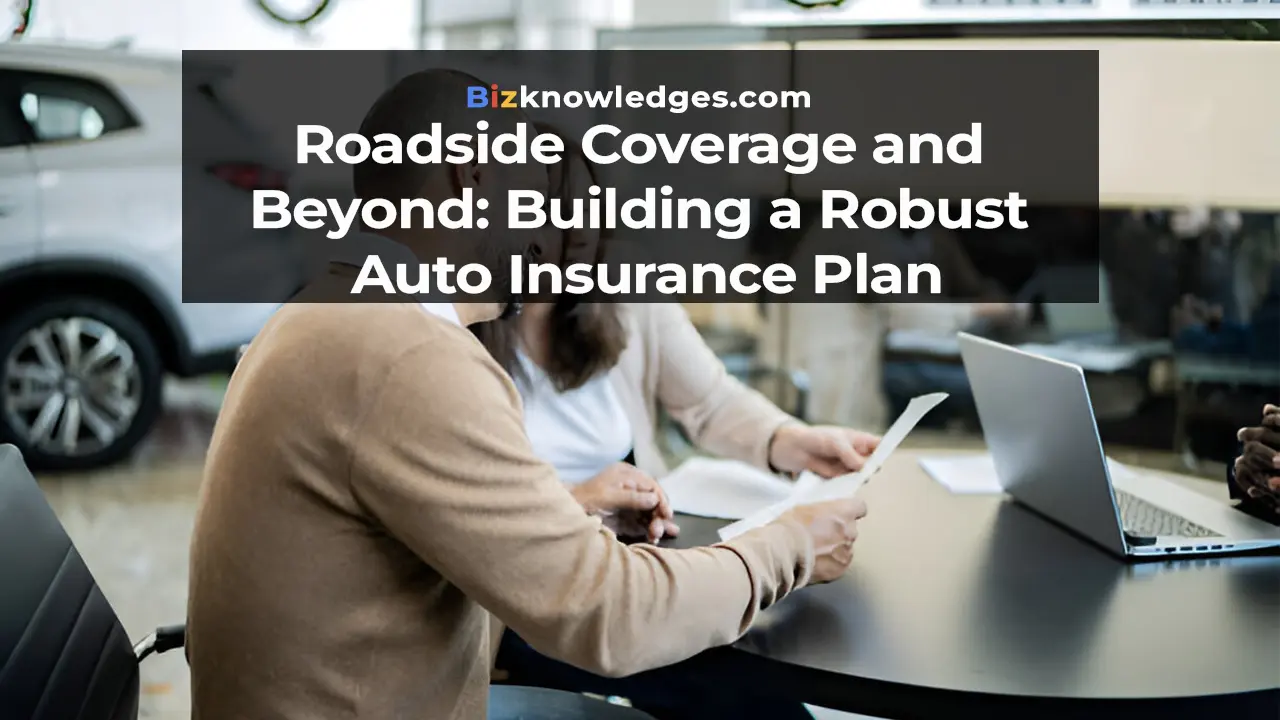Roadside Coverage and Beyond: Building a Robust Auto Insurance Plan

Creating a robust auto insurance plan requires understanding the various types of coverage available and tailoring them to meet your unique needs. You need a policy that extends beyond basic liability insurance and protects you when you’re driving, when an accident or incident occurs, and when your car is parked. Your policy should also ensure your financial security should your car be undrivable or totalled.
Join us as we discuss the crucial components of auto insurance, from roadside assistance to optional coverage types, and how to build a well-rounded plan that fits your lifestyle and driving habits.
Understanding the Basics of Liability and Collision Coverage
Auto insurance typically starts with liability and collision coverage, the two pillars of protection required in most cases. Liability insurance covers damage you cause to others in an accident, whether bodily injury or property damage. Collision coverage pays for repairs to your own vehicle if you’re involved in an accident, regardless of who is at fault.
These types of coverage are essential, ensuring you meet legal requirements and are protected financially. However, they don’t cover everything. You may still be vulnerable to losses from other risks like theft, natural disasters, or uninsured drivers.
To build a truly solid plan, it’s important to consider additional coverage options that go beyond these standard offerings.
Roadside Assistance
Roadside assistance is one of the most commonly added features to auto insurance plans. Many drivers rely on it when they’re stranded due to a flat tire, dead battery, or mechanical breakdown. While it’s easy to think of roadside assistance as just towing, many plans offer much more, including services like fuel delivery, lockout assistance, basic parts replacement, and tire changes. This can be a crucial add-on for frequent travellers or long-distance commuters, offering peace of mind in case of unexpected breakdowns.
However, roadside assistance often differs from insurer to insurer. Some companies may limit the number of times you can use the service per year or have restrictions on how far they’ll tow your car.
When getting auto insurance quotes and comparing plans, it’s important to read the fine print and understand the coverage’s limitations.
Personal Injury Protection and Medical Payments Coverage
Another key component of a strong auto insurance plan is medical coverage. Personal Injury Protection (PIP) and Medical Payments (MedPay) are designed to cover medical expenses that result from a car accident, regardless of who is at fault. These coverages not only pay for your immediate medical bills but may also extend to lost wages and other expenses related to the accident, such as rehabilitation.
Some states require PIP coverage, while others make it optional. Understanding the differences between PIP and MedPay is essential. While PIP tends to offer more comprehensive coverage, including lost wages, MedPay is more limited and often only covers medical bills. Depending on your needs and the coverage options in your state, you may want to include one or both of these in your insurance plan.
Uninsured and Underinsured Motorist Coverage
If you’re involved in an accident with an uninsured or underinsured driver, you could be left paying for damages out of your own pocket unless you have the right coverage. Uninsured motorist coverage applies when the at-fault driver has no insurance, and underinsured motorist coverage kicks in when the other driver’s policy limits aren’t enough to cover your costs. These coverages can also extend to medical bills and lost wages, helping you avoid unexpected financial burdens.
This type of coverage is particularly important in areas with high numbers of uninsured drivers. Adding this option can protect you from financial disaster if you’re hit by someone without adequate insurance.
Comprehensive Coverage Protects Against the Unexpected
Comprehensive coverage is designed to cover damage to your vehicle caused by events other than collisions, such as theft, vandalism, fire, or natural disasters. It’s an essential part of any auto insurance plan, especially if you live in an area prone to extreme weather conditions or high crime rates. Comprehensive insurance also covers damage from events like falling objects, floods, or hitting an animal, which can lead to expensive repairs.
For example, if a storm damages your car or it gets stolen, comprehensive coverage will help with the cost of repairs or replacement. While it’s typically optional, lenders often require comprehensive coverage for financed vehicles until the loan is paid off.
Rental Reimbursement and Gap Insurance

Rental reimbursement and gap insurance are two additional options that many drivers overlook but can be incredibly valuable.
Rental reimbursement helps cover the cost of a rental car while your vehicle is being repaired after an accident. This is particularly useful if you rely on your car for daily commutes or travel.
Gap insurance covers the difference between what you owe on your car loan and the car’s actual cash value if it’s totalled in an accident. Since cars depreciate quickly, the amount you owe on your loan may be higher than the car’s current value. Gap insurance ensures that you won’t be left paying out of pocket for the difference.
When building an auto insurance plan, several factors will influence the type and amount of coverage you need. These include:
- Driving Habits
Frequent long-distance drivers may want to prioritize roadside assistance and rental reimbursement, while local drivers may not need these as much. Additionally, high-mileage drivers might benefit from higher coverage limits to account for increased risk.
- Vehicle Type
Your vehicle’s age, make, and model will affect the cost of certain coverage options. Older cars may not need comprehensive coverage if their value is low. However, high-value or newer vehicles typically warrant more extensive protection.
- Budget
While it’s tempting to keep premiums low by opting for minimal coverage, doing so could cost you more in the long run if you’re involved in an accident. Be mindful of deductibles and coverage limits, ensuring you aren’t underinsured when it matters most.
Discounts and Bundling
Many insurance companies offer discounts that can help lower your premiums without sacrificing coverage. Common discounts include those for safe driving, bundling auto and home insurance, and installing safety features like anti-theft devices or airbags. Some companies also offer usage-based insurance programs, where your premium is based on your driving habits rather than general risk factors.
If you want to save money, ask your insurer about potential discounts and how you can qualify for them. Bundling multiple policies with the same company is often one of the easiest ways to get a discount, and it simplifies managing your coverage.
Secure Your Drive with a Robust Auto Insurance Plan
Creating a well-rounded auto insurance plan involves more than just meeting the minimum legal requirements. By considering options like roadside assistance, uninsured motorist coverage, and comprehensive protection, you can build a policy that protects you and provides financial security in various situations, ensuring you’re fully protected no matter what happens.
